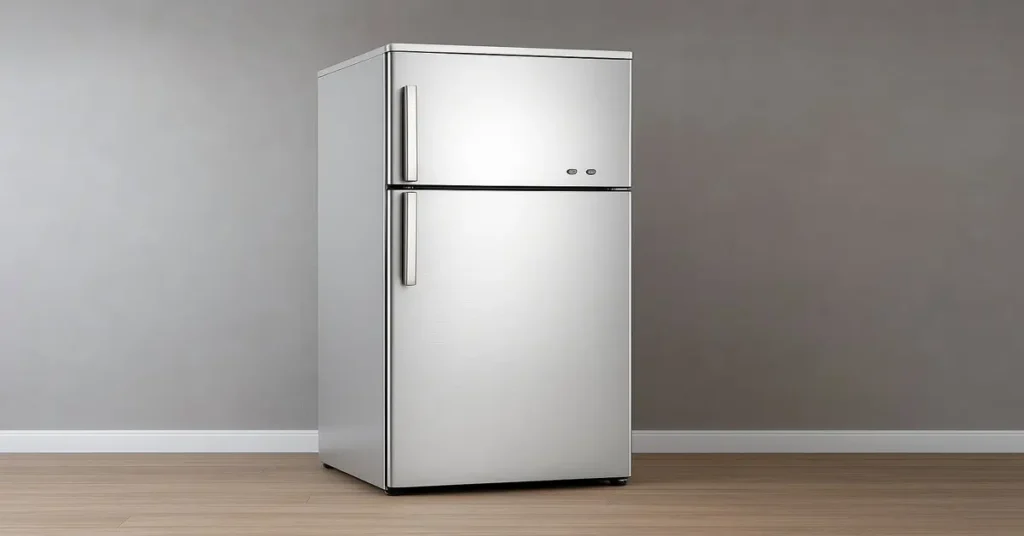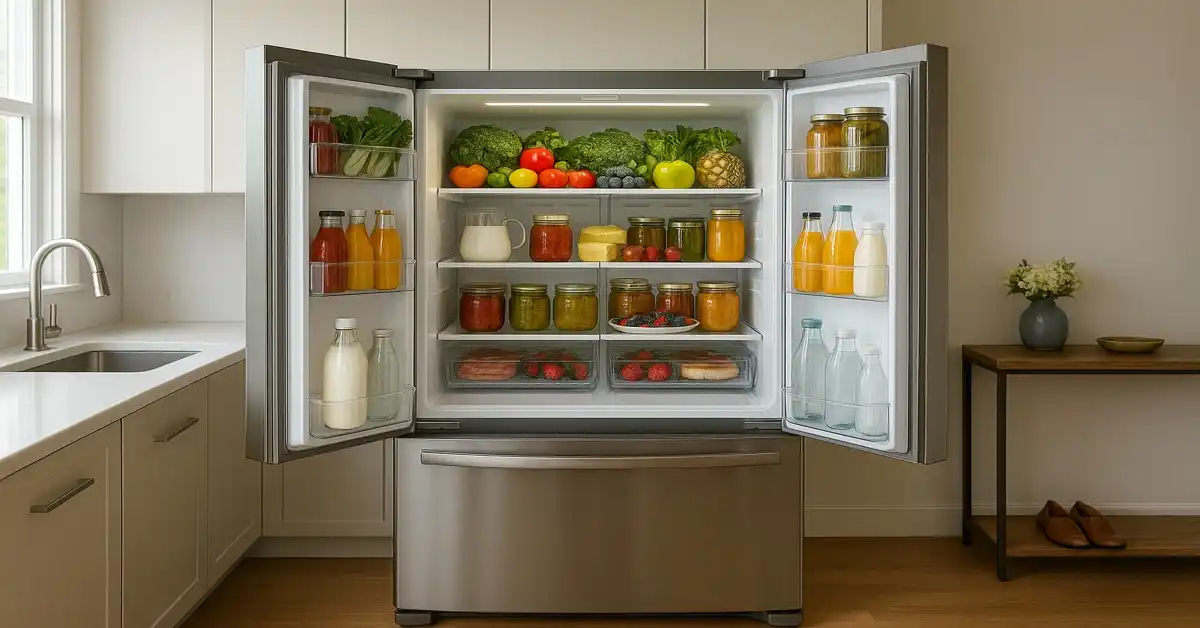If you have ever questioned what is the difference between refrigeration and freezing, you are not alone. I remember that I never really knew which section to use for which food items right after purchasing my double-door refrigerator.
I know that refrigeration is best for short-term storage of perishable items such as milk, fresh vegetables, and leftover dal, while freezing keeps foods for months or years after ensuring their safety.
Refrigeration – Keeping Food Fresh for a Few Days

Refrigeration is a technique to cool food materials at low temperatures, usually between 0°C and 5°C. This slows down microorganism growth and bacterial activity in the short term, thus preserving the food from changing its flavour, taste, or texture.
Common Uses of Refrigeration:
- Storing dairy products, such as paneer, milk, and curd.
- Maintain the crispness of fruits and some vegetables.
- Preserving cooked dishes for a day or two.
- Chilling beverages in the summer.
Key Point: Refrigeration keeps food at temperatures above freezing. A fridge is designed to hold food between 0 and 5 degrees C, perfect for slowing bacterial action, but not for long-term storage.
Also Read: Are Frigidaire Refrigerators Good?
Freezing – Long-Term Food Preservation
Household freezers normally operate at around -18°C, which is cold enough to ensure the food’s safety for months. Commercial freezers (L Class), used in restaurants or big kitchens, work between -15°C and -30°C for easy freezing.
At these freezing temperatures, bacterial activities practically halt, and water molecules in the foods get crystallised into ice, keeping the foods from spoiling for great lengths of time.
Common Uses of Freezing in Indian Homes:
- Keeping frozen food items like peas, sweet corn, and meat for months.
- Preservation of seasonal fruits like mango pulp.
- Making ice cubes and storing them for parties.
- Preservation of foods such as bread, snacks, and desserts.
Key Point: Freezing turns the water molecules inside food into ice, allowing it to be kept for long periods, although the process can sometimes adversely affect the texture (for example, it can make soft paneer a little crumbly).
What is the Difference Between Refrigeration and Freezing – Quick Comparison Table
| Feature | Refrigeration | Freezing |
|---|---|---|
| Temperature range | 0°C to 5°C (above freezing) | -15°C to -30°C (below freezing) |
| Storage time | Days to 1 week | Months to years |
| Food types | Perishable, ready-to-eat, fresh produce | Meat, frozen vegetables, ice cream |
| Effect on food | No major change in flavour or texture | May alter texture slightly |
| Purpose | Short-term storage | Long-term preservation |
Also Read: What Is Convertible Refrigerator?
When to Use Which Method
- Refrigeration: Perishables are used every day, such as milk, curd, fresh vegetables, and cooked food items.
- Freezing: Items that you don’t use every day but need to preserve food for longer — like meat, fish, seasonal fruits, or extra parathas.
The rule of thumb in my home is: within 3-4 days, it is a fridge item. Longer than that, it stays in the freezer.
Also Read: How Much Unit of Electricity Consumed by Refrigerator Per Day
FAQs
Is refrigeration and freezing the same?
Refrigeration is said to keep foods at temperatures above freezing (0°C to 5°C) for short-term storage, while freezing would store foods at temperatures lower (below 0°C) for long-term preservation.
Is freezing better than refrigerating?
Depending on the requirement, freezing is better for preserving food for months, such as meat or frozen vegetables, and refrigeration is better for keeping food fresh for a few days.
What is meant by refrigeration?
The term refrigeration, however, can generally refer to the process of keeping food materials at temperatures above 0°C, freezing. This slows bacteria growth and therefore keeps perishable foods fresh, without affecting taste or texture.
Can you freeze mayonnaise?
Freezing mayonnaise is generally avoided because freezing tends to separate and create large icy crystals, damaging its flavour and texture.
What food shouldn’t you freeze?
Curd, cream-based sauces, leafy greens, and soft cheeses are some foods that do not freeze well, as the formation of large ice crystals during freezing can result in a mushy texture after thawing.
Final Thoughts
Knowing what is the difference between refrigeration and freezing will help you set up food storage correctly to avoid spoilage and save money.
Refrigeration slows down microorganism growth, keeping food fresh for short periods without affecting flavour, while freezing will preserve the food for months. Both the refrigerator and freezer will cater to varied storage needs within an Indian home.
Disclaimer: This article is for general informational purposes only. Always follow manufacturer guidelines and food safety standards when storing food.
